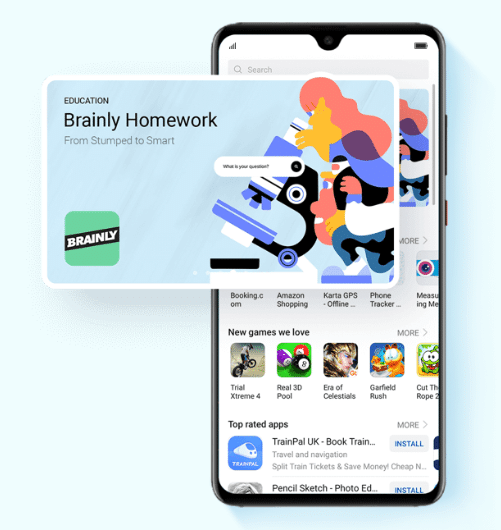With the introduction of HUAWEI’s AppGallery, VP of Huawei Consumer Business, MEA, Likun Zhao, looks at the evolution of mobile banking apps.
As governments around the world issue a collective directive to all their citizens to stay at home, many of us are thanking our lucky stars for the technology that defines our modern-day lives.
Never before have we had such unfettered access to staying connected during a crisis of these proportions. If we think back to SARS in 2002, or the H1N1 outbreak in 2009, we were reliant on, by today’s standards, fairly archaic mechanisms for communication and entertainment.
And what about the business impact of these lockdowns?
Packing up our laptops, chargers, docking stations and tucking our work-issued mobile devices into our pockets, few people have considered the impact that mobility has had on our ability to transact.
But it is not only the business-critical aspect of these advances that bears reflection, it is also the convenience and efficiency that has seeped into our busy existence.
Take mobile banking apps for example.
Why do people use mobile banking apps?
“Banking customers are switching to mobile banking apps simply because they are a secure, easy-to-use tool for everyday basic banking activities,” explains Likun Zhao, Vice President of Huawei Consumer Business Group, Middle East & Africa.
Today, as everything goes mobile, the rise of mobile apps has immensely influenced the banking sector.
Gone are the days when you had to stand in a long queue to deposit, transfer or withdraw cash. Mobility has revolutionised our approach to banking, and our expectation of its functionality.
As consumers, our demand for self-service and personalised products and services has fuelled the growth of the mobile banking market. Technological advancements have resulted in a range of useful features in mobile banking: real-time customer assistance, user-friendly interfaces, engaging user experiences, and immediate transactions.
24/7 availability and access from wherever we are means that banking customers are no longer limited by working hours and the location of branches and ATMs. Banking needs, like so many of our other present-day needs, require instant gratification.
Are mobile banking apps safe?
Reports suggest that many people still have security-related concerns when using digital banking channels. According to a 2019 Accenture Global Financial Services Consumer Study, 28% of bank customers believe that mobile and online banking isn’t safe.
Security has become the topmost priority of any mobile app, and when it comes to a mobile banking app, it holds critical significance. Banking applications, after all, collect a lot of sensitive data in one place – personal data, address data, account balance and, of course, money itself.
HUAWEI’s official app distribution platform, HUAWEI AppGallery, takes the security and protection of user data very seriously.
“HUAWEI AppGallery features a four-layer detection mechanism to ensure app security, as well as post-release app inspection and a mechanism for user feedback,” says Zhao. “Four-layer detection includes security vulnerability scanning, privacy check, malicious behaviour detection, and manual, real-name security checks to ensure apps are genuine and secure.”
Banks are leveraging mobile app development and the latest technologies to keep our money protected and safe – biometric login, two-factor authentication and high-level encryption are now market standards. Almost every activity in a banking app must be securely confirmed by the user.
What else do I get with mobile banking?
As mobile banking apps become more sophisticated and in-tune with customer needs, banks are constantly introducing new features to enhance the user experience and allow their customers to skip those bothersome banking queues.
“For example, ABSA’s banking app on HUAWEI’s AppGallery has recently added the ability to open a student bank account and scan your bank card when you register for digital banking. Nedbank Money, on the other hand, allows its users to download tax certificates and view the latest waiting times at selected branches,” says Zhao.
Innovation is key to sustainability and banks are keenly aware that the combination of rich and useful features and high security standards, equates to retention of current customers and attraction of new ones.


